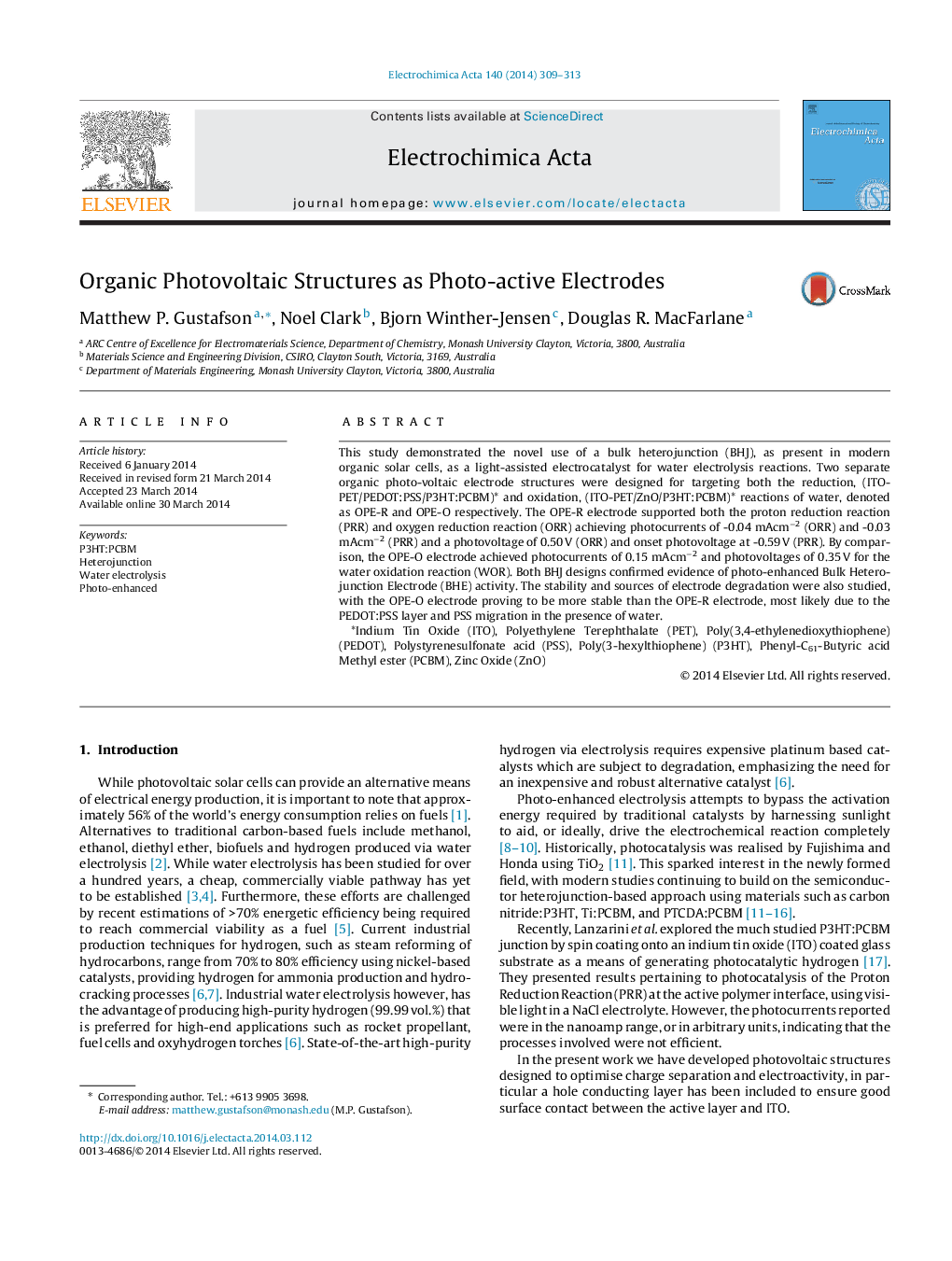| Article ID | Journal | Published Year | Pages | File Type |
|---|---|---|---|---|
| 185224 | Electrochimica Acta | 2014 | 5 Pages |
This study demonstrated the novel use of a bulk heterojunction (BHJ), as present in modern organic solar cells, as a light-assisted electrocatalyst for water electrolysis reactions. Two separate organic photo-voltaic electrode structures were designed for targeting both the reduction, (ITO-PET/PEDOT:PSS/P3HT:PCBM)* and oxidation, (ITO-PET/ZnO/P3HT:PCBM)* reactions of water, denoted as OPE-R and OPE-O respectively. The OPE-R electrode supported both the proton reduction reaction (PRR) and oxygen reduction reaction (ORR) achieving photocurrents of -0.04 mAcm−2 (ORR) and -0.03 mAcm−2 (PRR) and a photovoltage of 0.50 V (ORR) and onset photovoltage at -0.59 V (PRR). By comparison, the OPE-O electrode achieved photocurrents of 0.15 mAcm−2 and photovoltages of 0.35 V for the water oxidation reaction (WOR). Both BHJ designs confirmed evidence of photo-enhanced Bulk Heterojunction Electrode (BHE) activity. The stability and sources of electrode degradation were also studied, with the OPE-O electrode proving to be more stable than the OPE-R electrode, most likely due to the PEDOT:PSS layer and PSS migration in the presence of water.*Indium Tin Oxide (ITO), Polyethylene Terephthalate (PET), Poly(3,4-ethylenedioxythiophene) (PEDOT), Polystyrenesulfonate acid (PSS), Poly(3-hexylthiophene) (P3HT), Phenyl-C61-Butyric acid Methyl ester (PCBM), Zinc Oxide (ZnO)
